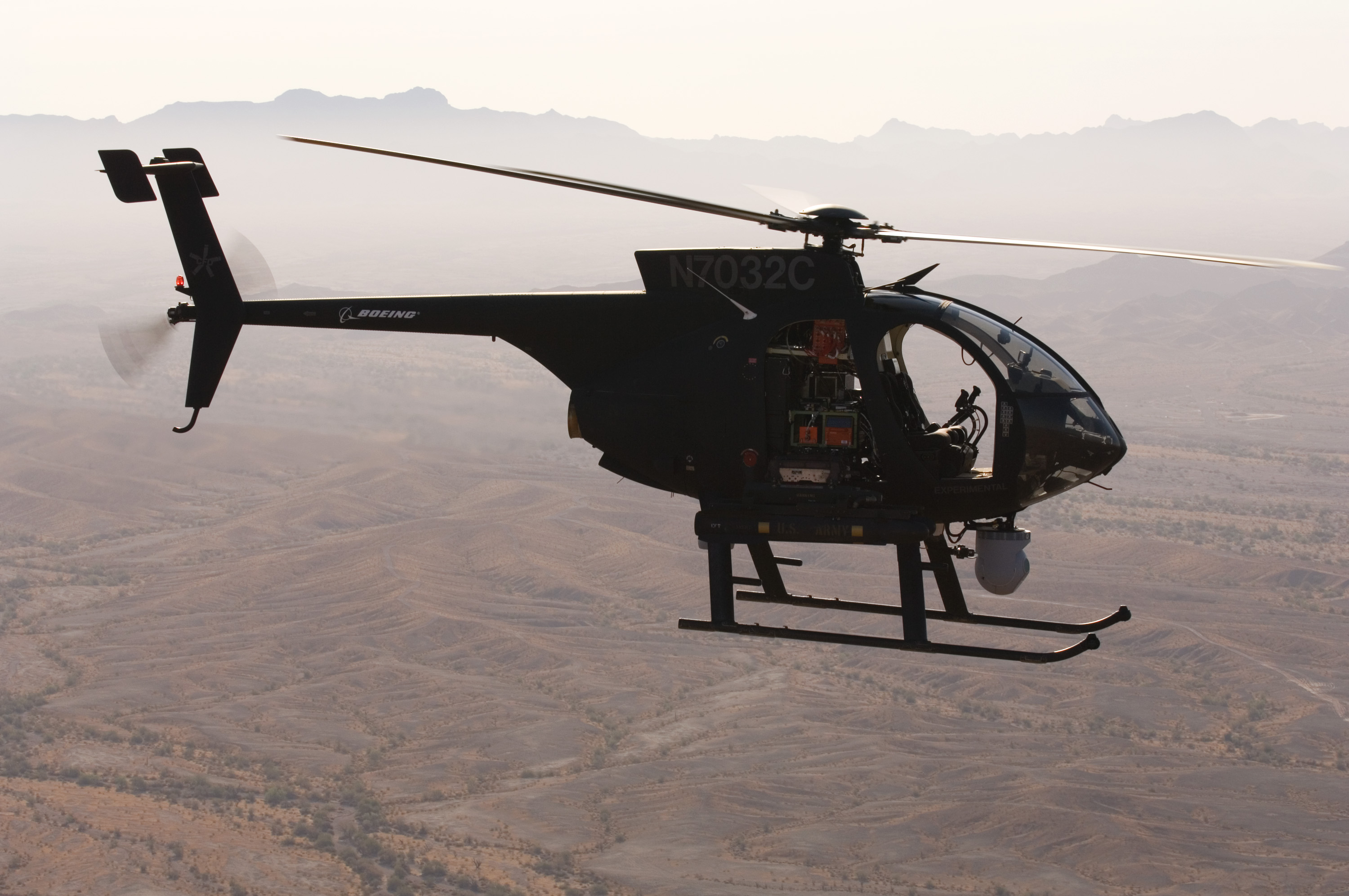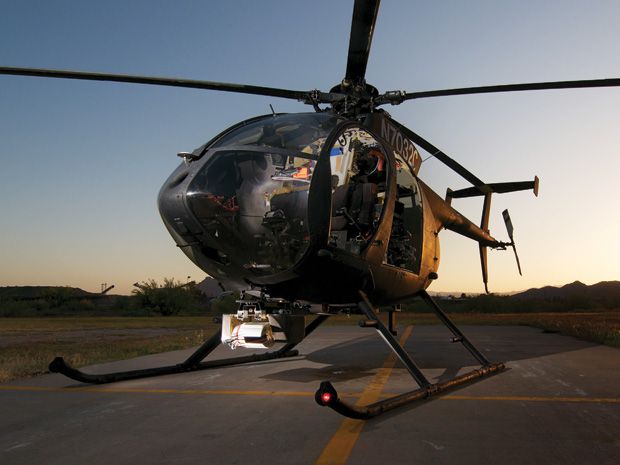 |
| New Helicopter That Can Fly Itself: Boeing’s Little Bird – NEXdaily |
Boeing: Unmanned Little Bird
The ULB is designed to test new manned and unmanned technologies and capabilities. Boeing R&D utilizing the Unmanned Little Bird demonstrated a variety of missions (resupply; intelligence, reconnaissance & surveillance; weaponization) and helped to shape the VTOL UAV market through flight experimentation.
The aircraft has safely conducted more than 500 hours of UAV technology flight testing since its first flight in September 2004. It is supporting the definition and qualification of U.S. Army manned/unmanned aircraft operations. The growth unmanned variant based on the A/MH-6M aircraft is only being marketed internationally.
Unmanned Little Bird: Flexible autonomy from land and sea (Video)
“It is one thing to land a UAV on a helipad compensating for winds, but it’s a whole other level when you also have translational and rotational motion of the ship deck to address,” said Dino Cerchie, Boeing Unmanned Little Bird program manager.
Following the sea demonstrations, Boeing has continued to prove the flexibility of Unmanned Little Bird. In December, the aircraft flew an autonomous land-based flight for the Republic of Korea Army to show how unmanned aircraft technology can be integrated onto that force’s MD 500 helicopters.
“The need for unmanned vertical-takeoff-and-landing capabilities is growing quickly across the globe, and the requirements vary widely,” said Eric Mathewson, director of Business Development for Unmanned Airborne Systems. “Unmanned Little Bird is performing flawlessly, showing it can provide affordable, reliable capabilities to meet warfighters’ many mission needs.”
Unmanned Little Bird (ULB) Helicopter UAV - Army Technology
A/MH-6X Mission Enhanced Little Bird helicopter
The A/MH-6X is an optionally manned or unmanned aircraft which is a hybrid of the ULB demonstrator and the A/MH-6M mission-enhanced Little Bird which is used by US Army Special Operations Command. The A/MH-6X completed its first flight in September 2006.
The payload capacity of the A/MH-6X is 1,543kg, nearly 50% greater than that of the ULB demonstrator.
The glass cockpit of the A/MH-6X includes advanced avionics systems such as multi-sensor data fusion, digital mapping, high bandwidth signal processing, data storage, digital radio and Ku band (11.0GHz to 14.5GHz) communications.
Unmanned Little Bird helicopter missions
For the US Army, the missions of the manned / unmanned A/MH-6X Little Bird could include surveillance, as a wideband communications node, resupply of troops in battlefield forward positions, the extraction of stranded soldiers in the battlefield and the rescue of downed pilots.
Unmanned helicopter design
The unmanned Little Bird helicopter air vehicle is based on the combat-proven MD 530F light helicopter which was first flown in 1982.
The helicopter is fitted with an articulated five-bladed main rotor of diameter 8.33m. The retention pins are removed to fold the blades for storage.
Mission payloads
The ULB helicopter can be fitted with a range of surveillance, communications and weapons to fulfil different mission requirements. The payload capacity is 1,090kg.
The flight tests of the ULB helicopter have been carried out with payloads of an L-3 Wescam MX-15 electro-optical and infrared sensor together with an L-3 Communications tactical common datalink (TCDL).
Robocopters to the Rescue - IEEE Spectrum
The machine would have landed safely all on its own. But the pilot could be excused for questioning its, uh, judgment. For unlike the autopilot that handles the airliner for a good portion of most commercial flights, the robotic autonomy package we’ve installed on Boeing’s Unmanned Little Bird (ULB) helicopter makes decisions that are usually reserved for the pilot alone. The ULB’s standard autopilot typically flies a fixed route or trajectory, but now, for the first time on a full-size helicopter, a robotic system is sensing its environment and deciding where to go and how to react to chance occurrences.The sensor technology under the nose of Boeing’s Unmanned Little Bird (ULB) helicopter maps terrain, plans routes, discerns safe landing sites, and avoids obstacles—all by itself.
It all comes out of a program sponsored by the Telemedicine & Advanced Technology Research Center, which paired our skills, as roboticists from Carnegie Mellon University, with those of aerospace experts from Piasecki Aircraft and Boeing. The point is to bridge the gap between the mature procedures of aircraft design and the burgeoning world of autonomous vehicles. Aerospace, meet robotics.

No comments:
Post a Comment